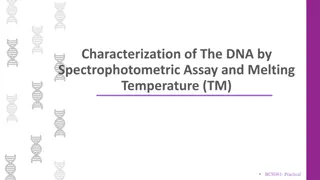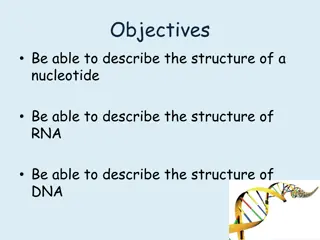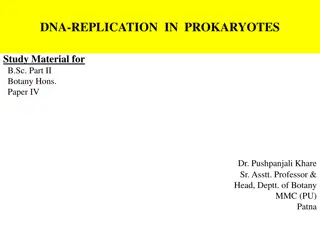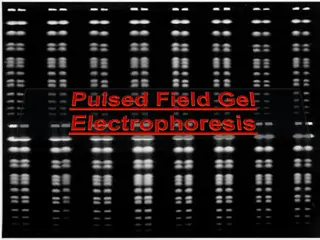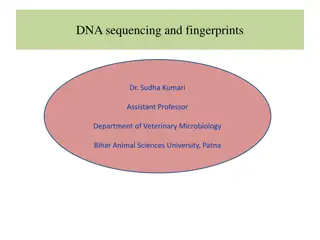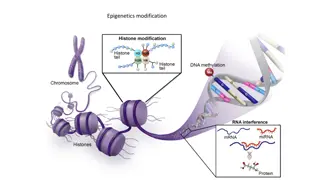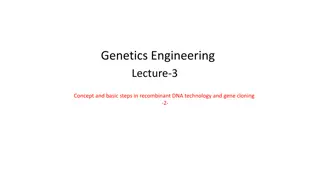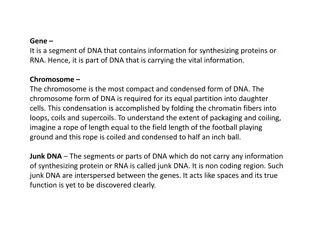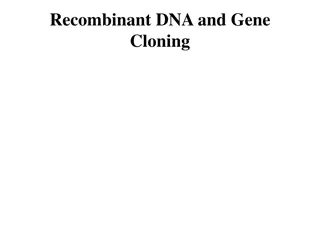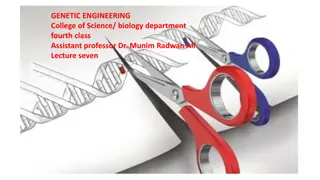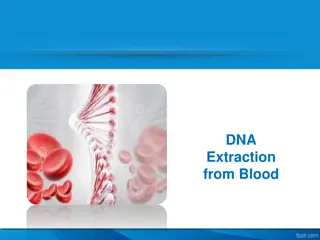DNA Profiling: Techniques and Applications
DNA profiling, invented by Alec Jeffreys in 1985, is a technique used to distinguish between individuals of the same species based on their DNA. The process involves breaking down cells to release DNA, cutting the DNA into fragments using restriction enzymes, separating and analyzing fragments based on size, and producing a visual DNA profile for comparison. This method plays a crucial role in forensic investigations, paternity testing, and evolutionary studies.
Download Presentation

Please find below an Image/Link to download the presentation.
The content on the website is provided AS IS for your information and personal use only. It may not be sold, licensed, or shared on other websites without obtaining consent from the author.If you encounter any issues during the download, it is possible that the publisher has removed the file from their server.
You are allowed to download the files provided on this website for personal or commercial use, subject to the condition that they are used lawfully. All files are the property of their respective owners.
The content on the website is provided AS IS for your information and personal use only. It may not be sold, licensed, or shared on other websites without obtaining consent from the author.
E N D
Presentation Transcript
DNA Profiling (DNA fingerprinting)
What is DNA Profiling? A technique used by scientists to distinguish between individuals of the same species using only samples of their DNA
Who Invented it? The process of DNA fingerprinting was invented by Alec Jeffreys at the University of Leicester in 1985. He was knighted in 1994.
Stages of DNA Profiling Stage 1: Cells are broken down to release DNA If only a small amount of DNA is available it can be amplified using the polymerase chain reaction (PCR)
Stages of DNA Profiling Step 2: The DNA is cut into fragments using restriction enzymes. Each restriction enzyme cuts DNA at a specific base sequence.
Stages of DNA Profiling The sections of DNA that are cut out are called restriction fragments. This yields thousands of restriction fragments of all different sizes because the base sequences being cut may be far apart (long fragment) or close together (short fragment).
Stages of DNA Profiling Stage 3: Fragments are separated on the basis of size using a process called gel electrophoresis. DNA fragments are injected into wells and an electric current is applied along the gel.
Stages of DNA Profiling DNA is negatively charged so it is attracted to the positive end of the gel. The shorter DNA fragments move faster than the longer fragments. DNA is separated on basis of size.
Stages of DNA Profiling A radioactive material is added which combines with the DNA fragments to produce a fluorescent image. A photographic copy of the DNA bands is obtained.
Stages of DNA Profiling Stage 4: The pattern of fragment distribution is then analysed.
Uses of DNA Profiling DNA profiling is used to solve crimes and medical problems
Crime Forensic science is the use of scientific knowledge in legal situations. The DNA profile of each individual is highly specific. The chances of two people having exactly the same DNA profile is 30,000 million to 1 (except for identical twins).
Biological materials used for DNA profiling Blood Hair Saliva Semen Body tissue cells DNA samples have been obtained from vaginal cells transferred to the outside of a condom during sexual intercourse.
DNA Profiling can solve crimes The pattern of the DNA profile is then compared with those of the victim and the suspect. If the profile matches the suspect it provides strong evidence that the suspect was present at the crime scene (NB:it does not prove they committed the crime). If the profile doesn t match the suspect then that suspect may be eliminated from the enquiry.
Example A violent murder occurred. The forensics team retrieved a blood sample from the crime scene. They prepared DNA profiles of the blood sample, the victim and a suspect as follows:
Was the suspect at the crime scene? Suspects Profile Blood sample from crime scene Victims profile
Solving Medical Problems DNA profiles can be used to determine whether a particular person is the parent of a child. A childs paternity (father) and maternity(mother) can be determined. This information can be used in Paternity suits Inheritance cases Immigration cases
Example: A Paternity Test By comparing the DNA profile of a mother and her child it is possible to identify DNA fragments in the child which are absent from the mother and must therefore have been inherited from the biological father.
Is this man the father of the child? Mother Child Man
Famous cases In 2002 Elizabeth Hurley used DNA profiling to prove that Steve Bing was the father of her child Damien
Famous Cases Colin Pitchfork was the first criminal caught based on DNA fingerprinting evidence. He was arrested in 1986 for the rape and murder of two girls and was sentenced in 1988.
Famous Cases O.J. Simpson was cleared of a double murder charge in 1994 which relied heavily on DNA evidence. This case highlighted lab difficulties.
This powerpoint was kindly donated to www.worldofteaching.com http://www.worldofteaching.com is home to over a thousand powerpoints submitted by teachers. This is a completely free site and requires no registration. Please visit and I hope it will help in your teaching.
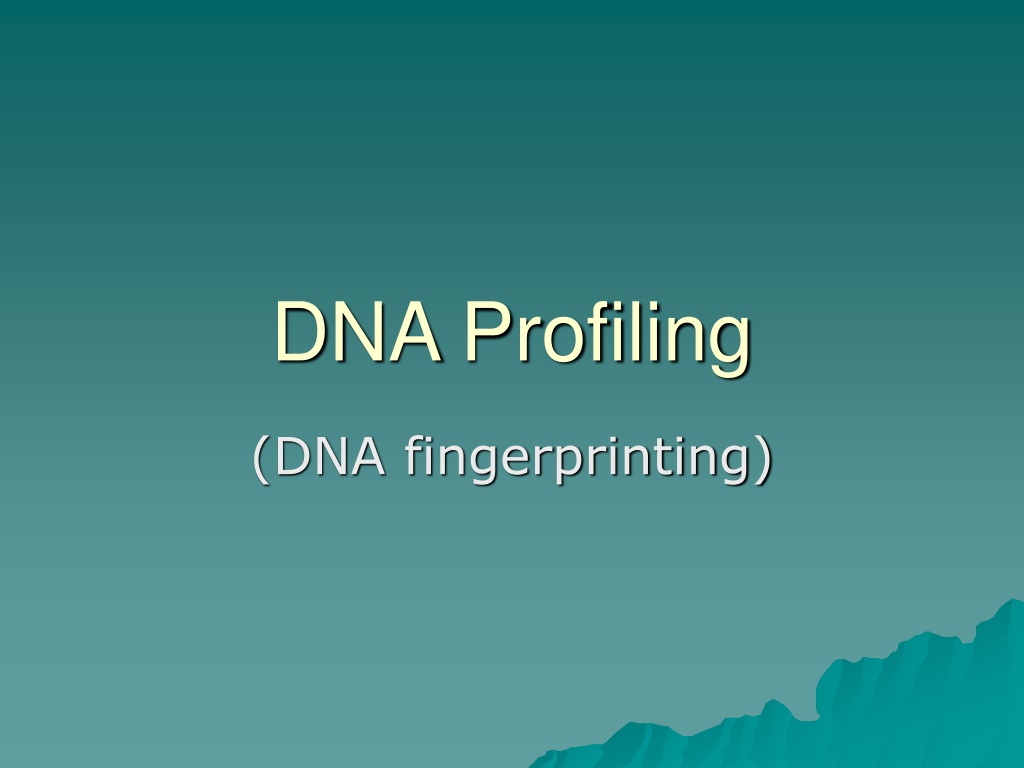
 undefined
undefined



